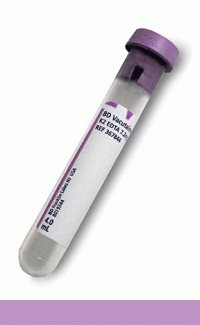Hepatitis C Virus RNA Quantitative RT-PCR
Main Content
Test Code: 97756
CPT Code: 87522
Alternative Name(s): HCV RNA QN RT-PCR
Methodology: Reverse Transcription Polymerase Chain Reaction
Clinical Significance: Hepatitis C virus (HCV) is one of the major causes of liver disease. It was estimated that about 1.1% of the population are chronically infected with hepatitis C1 and approximately 700,000 people die each year from hepatitis C-related liver disease.2 HCV is a positive-strand RNA virus and transmitted primarily through intravenous drug use and through blood products. About 55 to 85% of HCV-infected individuals develop chronic hepatitis, with up to 30% of chronically infected individuals developing cirrhosis. In patients with cirrhosis, the incidence of hepatocellular carcinoma is 2 to 4% per year.
The diagnosis of HCV infection utilizes testing algorithms that rely on a sequential two-step process with the initial test assessing the presence/ absence of HCV-specific antibody and followed by a confirmatory assay (eg, HCV nucleic acid test) for those with a positive HCV antibody result. A positive HCV antibody result indicates prior exposure to HCV but does not differentiate between active and non-active infections. In the presence of HCV antibodies, detection of HCV RNA confirms active HCV infection.
Quantitative measurement of HCV RNA levels in peripheral blood has been shown to be an essential parameter in the management of various anti-HCV therapies. With the advent of direct acting antiviral regimens, the treatments for HCV infection have been advanced dramatically. In the era of direct-acting antivirals (DAAs) HCV viral load measurements are used to monitor and determine successful HCV treatment, ie, sustained virological response (SVR). Guidelines from the AASLD define SVR as undetectable HCV RNA (determined with an assay that has a limit of detection of <25 IU/mL) after therapy. Guidelines from the AASLD suggest testing HCV RNA not only at baseline and at 12 weeks following completion of treatment, but also periodically during treatment (eg, 4 weeks).
The HCV assay is designed to target a highly conserved sequence of the HCV genome. The HCV primers and probes for the assay include a second probe to further ensure assay robustness against new and emerging HCV variants. Both HCV probes are labeled with the same fluorophore. The design ensures accurate detection and quantitation of HCV genotypes 1 through 6 while maintaining high sensitivity.
In addition to the HCV primers and probes, the assay utilizes an internal control (IC) primer/probe set for amplification and detection of the IC target sequence, which is not related to HCV. The IC controls for substantial reagent failure and sample inherent inhibitions of the RT-PCR reaction. The IC probe is labeled with a different fluorophore than the HCV probes. This allows for simultaneous detection and discrimination of both the HCV and IC amplified products within the same reaction vessel.
Supply: #193292 Lavender 4mL Blood Tube
Preferred Specimen: Plasma
Preferred Volume: 2mL
Collection Instructions: Mix by gentle inversion 3-4 times. Centrifuge to separate plasma from cells. Remove plasma immediately and refrigerate.
Transport Container: Pour off tube
Transport Temperature: Refrigerated
Specimen Stability: Refrigerated: 3 days
Reject Criteria:
Specimens exceeding stability, specimens collected in collection devices/tubes other than EDTA
For additional test, supply, or collection device information, please contact DLO's Customer Service at (800) 891-2917, option 2.
The CPT codes provided are based on AMA guidelines and are for informational purposes only. CPT coding is the sole responsibility of the billing party. Please direct any questions regarding coding to the payor being billed.



CLIA